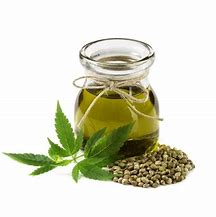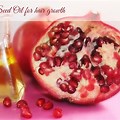Sun Flower Oil



-
Sunflower Oil
- Latin name
Helianthus annuus L.
Family: Asteraceae (Compositae)
Etymology
Helios is the Greek word for sun and anthos means flower. Annus is from the Latin and means yearly. In France, the plant is called tournesaol and in Spain tornasol, both of which mean 'that which turns towards the sun' but this had no foundation in fact and the plants do not show this behaviour; although the flowers do all face the face way - facing the morning sun in the south of France - they do not turn.- The Plant and its environment
The flower originated in South America, where it was worshipped by the Aztecs as a representation of the sun; the seeds were eaten and toasted or turned into meal and the plant was brought to Europe at the end of the 16th century. The major growers today are the countries of the former Soviet Union, Eastern Europe, India, Argentina, the Mediterranean countries and the USA. It is also grown in large quantities in the South France. - Sunflowers can grown to a height of 5 metres (15 feet) and the flower heads can vary from 7,5 cm (3 inches) in diameter to an impressive 35 cm (15 inches)! This tremendous growth takes place in a relatively short period of time (the plant is an annual) and requires lots of water, so sunflowers can be used to drain soggy area.
- They will grow in almost any soil as long as there is plenty of full sun and they are watered daily in dry areas. before collection the seeds are allowed to ripen in the flower head until black, and each head yields on average 0.25 kg (0.5 lb) of seeds. 'High oleic' type sunflowers are also grown and here the triglycerides contain at least 80% oleic acid. The oil from these is more heat resistant than the usual 'linoleic type' sunflower oil.
- The Oil
Sunflower seeds contain around 30% of oil (although some modern varieties contain 50% (Brunenton 1995) which is light and slightly sweet . Organic sunflower oil is often used as the macerating medium for calendula and other plants. - The Oil
Sunflower seeds contain around 30% of oil (although some modern varieties contain 50% (Bruneton 1995) which is light and slightly sweet . Organic sunflower oil is often used as the macerating medium for calendula and other plants.
Method of extraction
All oil extracted from organically grown plants is obtained by cold pressing. The oil; obtained from non-organically grown plants and sold commercially in large quantities is produced by solvent-base refining.
Principal Constituents
| Type | Based on | Content -% |
| Saturated fatty acid units | ||
| C14:0 | myristic acid | <0.5 |
| C16:0 | palmitic acid | 1-10 |
| C20:0 | arachidic acid | 0-1.5 |
| C22:0 | behenic acid | 0-1 |
| C24:0 | lignoceric acid | <0.5 |
| Typical saturated fatty acid unit content | ||
| Monounsaturated fatty acid units | ||
| C18:2 | linoleic acid | 64 (55-70) |
| C18:3 | alpha-linolenic acid | <0.3 |
| Typical polyunsaturated fatty acid unit content | 64 | |
| *the value increases with cooler growing conditions | ||
| The 'high oleic' sunflower oil has the approximate compositon: | ||
| Physical properties | ||
| Odour | essentially odourless | |
| Acid value | 0.4 mac | |
| specific gravity | 0.915-0.920 | |
| Energy value Kcal/100ml | 900 | |
- Vitamins
The oil contains vitamins A, D and (principally) E, and minerals calcium, zinc, potassium, iron, phosphorus. - Folk-lore and traditional plant uses
The oil was used by the indigenous population of America to help with rheumatism, whereas in Russia the leaves and flowers were used for the treatment of chest problems, bronchitis, coughts and even malaria. The dried leaves have been smoked like tobacco. - Therapeutic properties - internal use
Sunflower oil has sligh diuretic properties and also favours the development of healthy teeth in growing children. It aids cholesterol metabolism (Bartram 1996) and may be used to counteract arteriosclerosis 9Steir 1990). Sunflower oil is expectorant and, as it contains inulin, it is useful in the treatment of asthma (mabey 1988 p. 14). It has been reported as being helpful in the treatment of multiple sclerosis (Anon 1990, Millar et al 1973, Swank & Dugan 1990). A homeopathic sunflower tincture is used in cases of constipation. Oleic type sunflower oil is included in mixtures designed to balance the lipidic diet (Bruneton 1995): the current recommendations are 25%50%25% of saturated, monounsaturated and polyunsaturated oils respectively. - Therapeutic properties - external use
beneficial for skin complaints and bruises
alleged to be helpful in cases of leg ulcers
included in preparations for skin disorders, haemorrhoids, acne, seborrhoea, rhinitis and sinusitis (Reynolds 1993) - Cosmetic Use
The oil has softening moisturizing effect on the skin (Mabey 1988 p. 145) and is used for massage. - Culinary Use
It is a good cooking oil and is used in frying and to make margarine, cheese and salad dressings. Mixing the seeds with water in a blender produces very palatable vegetarian milk. The seeds can be roasted and eaten or ground for use as a coffee substitute. The flower buds can be cooked and eaten with butter just like artichokes.
As the smoke point is below 220C the oil is suitable for low temperature cooking.
Cautionary Notes
The oil used in blended cooking oils has been highly refined and should not be used for aromatherapy/massage. The unrefined oil should not be used at high temperatures as it breaks down and produces toxic elements when heated (Earle 1991). Otherwise, there are no other known contraindications (Winter 1984).
Reference: Carrier Oils : Len Price
Articles-Most Read
- Home
- Contact Us
- Coconut Oil-2
- Absorption Ratings for Carrier Oils
- Cold Pressing Method
- What are Essential Fatty Acids
- Cherry Kernel Oil
- Fixed Oils and Skin Penetration
- Hempseed Oil
- Almond Oil
- Cocoa butter
- Camelina Oil
- Coconut Oil
- Antibacterial Effects Of Carrier Oil
- Lime Blossom Oil (macerated)
- Carrot Oil, Wild Carrot Oil (macerated)
- Apricot Kernel Oil
- Kukui Nut Oil
- Jojoba Wax
- Pumkin Seed Oil - Cucurbita maxima, C. pepo
- Passion Flower OIl (Macerated)
- Hydrocotyle Oil (macerated)
- Palm Kernel Oil
- Rapeseed Oil - Carrier Oil
- Nutrients
Who's On Line
We have 229 guests and no members online
Articles-Latest
- How to Make Homemade Olive Oil: A Step-by-Step Guide
- 20 Evidence-Based Aloe Vera Oil Benefits For Skin, Hair & Health
- Peanut oil - Cold pressed - Are There Health Benefits? How To Make
- What Are the Health Benefits of Black Seed Oil?
- Comfrey oil Infused
- Chamomile Flowers Infused Oil
- Calendula Flowers Infused Oil
- Arnica Flowers Infused Oil
- How To Make Herb-Infused Oils
- DIY avocado oil for healthy skin
- How To Make Coconut Oil
- 8 Benefits of Mustard Oil, Plus How to Use It
- SHOREA STENOPTERA SEED BUTTER
- Shea Butter- 7 Amazing Benefits Of Shea Butter
- Monoi Oil For Hair & Skin
- Mango Seed Oil
- Cohune Oil Is The Next Big Thing
- Brazil Nut OIl
- 7 Impressive Benefits Of Allspice
- Camelina Oil Benefits, Uses, and Side Effects




